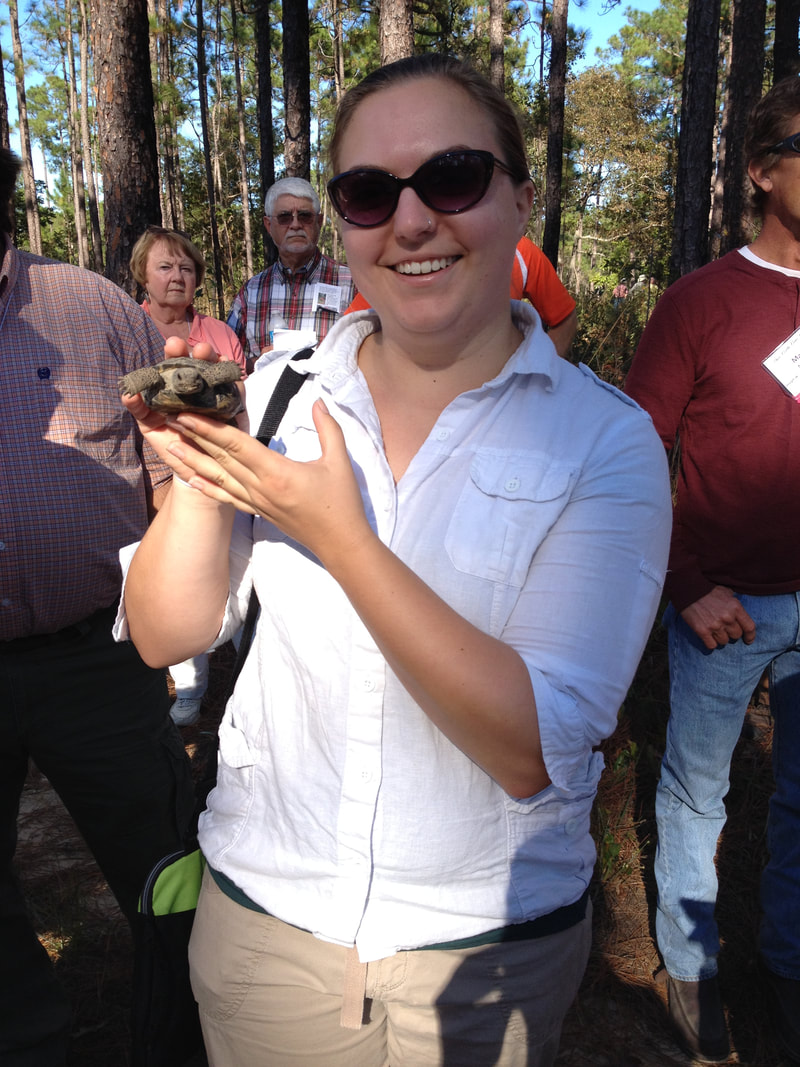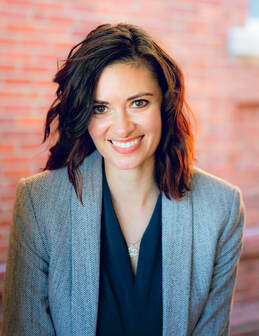| I have been a lifelong admirer of nature; as a child, hiking and camping were my favorite pastimes, but the great outdoors seemed, as Charles Darwin put it, an impenetrable “tangled bank, clothed with many plants of many kinds…” I cared about conservation, but I struggled to turn my desire to preserve nature into action. As an undergraduate student at the University of Montevallo, my research experience on territorial behavior of a salamander species (the Peaks of Otter salamander, Plethodon hubrichti) opened my eyes to the vital role of science in conservation. Behavioral experiments, paired with knowledge of P. hubrichti’s environmental tolerance limits, could help us understand why the Peaks of Otter’s habitat was vulnerable to human activities, and how it persisted in the face of competition from a much more widespread salamander species (the red-backed salamander, Plethodon cinereus). Since then, I have pursued a career as a scientist with a focus on research that will inform conservation and restoration of natural ecosystems. During my final undergraduate course, a field-based wetland ecology course, we visited pitcher plant bogs in a critically endangered ecosystem in the southeastern United States: longleaf pine savannas. I was captivated by the incredible plant diversity in the understory, and I had to know how so many kinds of plants could persist together. This led me to the lab of Dr. Kyle Harms at Louisiana State University. I joined his lab as a PhD student and dove headfirst into the “tangled bank” of plant communities. My graduate research focused on native perennial bunchgrasses, the dominant competitors in the longleaf pine savanna understory. Although these grasses use many limited resources, they also provide one of the main sources of fuel for the frequent fires that disturb the landscape, creating opportunities for more rare plants to colonize and grow. During my dissertation research, I discovered that dominant bunchgrasses are also spatially overdispersed, which means that there is abundant space between them where other plants can grow. After 30 or so years of living in the southeastern United States, I decided I had had my fill of 90% humidity, so I searched for a job in a different climate. Luckily for me, Dr. Elise Gornish in the School of Natural Resources and the Environment, was searching for a Postdoctoral Researcher to lead a demographic study of the invasive perennial bunchgrass species, buffelgrass (Cenchrus ciliaris). Now I am at the University of Arizona examining the factors driving population growth of buffelgrass in the Sonoran Desert. Buffelgrass threatens the biodiversity and ecosystem function of Sonoran Desert plant communities both by competing with native species and by increasing wildfire risk. By studying its life cycle, growth, and reproduction in a variety of environmental contexts, we can determine which physical and biotic factors are ideal for the growth and spread of buffelgrass. Furthermore, with population modeling, we can determine which life stages of buffelgrass contribute the most to its population growth rates and which life stages are most vulnerable to treatment. We hope to use this study to understand what makes buffelgrass such a successful invader and to optimize treatment strategies to reduce the spread of buffelgrass in the Sonoran Desert. As a member of the Gornish Lab, I can’t help but be excited about ecological restoration. In addition to my research on buffelgrass, I am collaborating with several other Postdoctoral Researchers (Drs. Trace Martyn, Lauren Svejcar, and Julia Cacon Labella) to determine how density, species diversity, and neighbor distance affect interactions between and among plant species commonly used in restoration in Sonoran Desert rangelands. With my own funding from the Postdoctoral Research Development Grant from the University of Arizona, I am continuing this collaboration to examine how priority effects influence interactions between buffelgrass and native grasses commonly used in restoration. Although, I love research, I also find teaching and outreach very rewarding. This fall I am working with SARSEF: Southern Arizona Research, Science and Engineering Foundation to bring an authentic research experience to a rural high school biology class. I am partnering with Gavin Lehr, a science teacher at Sahuarita High School, to create an opportunity for his freshman biology students to conduct research on native pollinator-plant interactions. We have already planted a native pollinator habitat garden on the Sahuarita High School campus, and soon Mr. Lehr’s students will be observing nature and forming scientific questions and hypotheses right outside their classroom. You can see more about my research on my website: https://katherinehovanes.wixsite.com/katherinehovanes. To learn more about ecological restoration research in the Gornish Lab, check out our lab website (https://www.gornishlab.com/) Instagram page (https://www.instagram.com/restorecal/?hl=en) and twitter (@RestoreCal). | Dr. Katherine Hovanes was awarded a Postdoctoral Research Development Grant (PRDG) from the University of Arizona for a project titled “Combined strategies for control of invasive grasses and native plant restoration”. |
|
0 Comments
|
SpotlightEach month we'll feature a Postdoctoral Scholar and their research, sharing their experiences from the UA, life in Arizona and their research interests. Archives
November 2022
Categories |


 RSS Feed
RSS Feed
